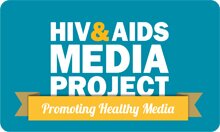Responses to children affected by HIV and AIDS
With children affected in a multitude of ways, Part 2 presents just ten of the many critical issues at stake in a national response to children experiencing the impact of the epidemic.
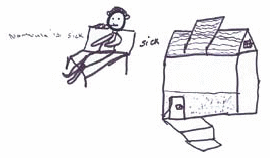
Key issues related to the implementation of clinical interventions to prevent and treat HIV in children are presented first. Urgent attention is also called to the delay in formalising programmes and policies, and the appropriateness of some existing responses, such as the building of more orphanages, the reliance on volunteers, and the ways government grants are being implemented. Lastly, the limitations of media prevention campaigns and poor health services for youth are noted.
Important policy and programme debates are being held within government and civil society about the best ways to assist children in the context of the HIV epidemic. Studies on the impact of different service and support responses on children's lives are underway. Such research plays a crucial role in identifying appropriate interventions for children (see Part 5 for a list of research organisations to contact for updated information).
What we already know is that there is no single solution. A range of complementary strategies is needed to address the impact of the epidemic, some of which focus directly on children, while others focus on families and communities.
The media can play a vital role in ensuring appropriate responses to HIV and AIDS. How? By engaging in the debates, tracking implementation, and highlighting areas where government does not live up to its promises.
Prevention of mother-to-child transmission (PMTCT) programmes must not be sidelined in the urgent rollout of antiretroviral treatment
Prevention of vertical HIV infection of children is simple, readily achievable in the South African context, and is much more cost-effective than treating infected children. It is crucial that attention be paid to making PMTCT programmes effective.
Public sector PMTCT programmes in South Africa currently involve:- Voluntary counselling and testing (VCT) for HIV for mothers;
- Single-dose Nevirapine for mothers and babies;
- Counselling on infant feeding options and free formula for six months if needed;
- Access to support groups where disclosure, practising safe sex, and family planning are discussed;
- Infant follow-up and testing.

With this intervention, transmission from mother to child can be reduced by about 50% to between 13% and 15%.
Slightly more complex PMTCT regimens, which use more than one ARV drug, do exist. These could bring vertical transmission of HIV down to between 2% and 5% 7. Unfortunately, these are not currently available in public sector clinics in South Africa, with the exception of the Western Cape. There is minimal reporting in the South African media on PMTCT.
Vertical transmission of HIV refers to when a mother transmits HIV to her child while in-utero, during birth, or through breast-feeding. Horizontal transmission of HIV refers to transmission through sex, contaminated needles, etc.
Definitive HIV tests for children are not available in the public sector until they are 18 months old, even though alternatives exist
A key component of PMTCT is the follow-up and testing of children. Most provinces use antibody tests, which only confirm positive diagnoses when a child is 18 months old. More expensive tests (PCR tests) are available and effective from six weeks, but these are only used in the Western Cape.
There are many disadvantages to a late diagnosis of children's HIV status:- The longer the time lapse, the higher the proportion of children who do not return to clinics for follow-up care;
- Delays in children's treatment can lead to illness and death;
- Most children who have gone through the PMTCT programme should ultimately test HIV-negative. Late testing places unnecessary loads on public health services to follow up children who could have been released from monitoring at a much younger age.
Safe infant feeding is a challenge for HIV-positive women
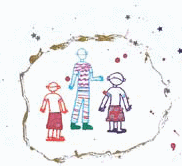
Although formula feeding removes the risk of post-natal transmission of HIV, there is concern that it could lead to an increase in diarrhoeal disease, due to contamination of bottles. There are, however, many areas where formula feeding can be safely promoted.
If women decide to breastfeed their infants, there is evidence to suggest that exclusive breastfeeding is safer than mixed feeding.
HIV-positive women are, therefore, advised to bottle-feed or to breastfeed exclusively for four months and then abruptly wean their babies. Many complex factors need to be taken into account before one or the other can be recommended. Context is key and the following need to be taken into consideration:
- Access to clean, safe water in sufficient quantities;
- Stigma associated with bottle-feeding;
- Costs of bottle-feeding or access to free formula milk;
- Customary feeding practices;
- The support of family and the baby's caregivers.
The challenges in providing antiretroviral treatment (ART) to children can be different to those involved in treating adults
The number of children in need of ART far exceeds the current availability of the drugs. In early 2005, estimates based on the ASSA model suggest that less than one in five children who were in need of ART were actually receiving the treatment 1. Hopefully this proportion will change rapidly, as treatment is rolled out nationally. Some of the barriers to providing antiretrovirals to children include:
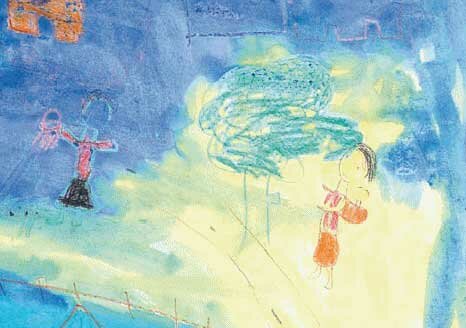
- A shortage of trained staff at primary care level with the experience and confidence to diagnose and treat HIV-positive children;
- Antiretroviral treatment regimens need a minimum of three different medications, often in the form of syrups, some of which taste unpleasant and require refrigeration;
- Few combined formulations (more than one drug in a single tablet/syrup/ suspension) are available for children;
- Paediatric syrups are more expensive than adult medication. Global activism to make treatment affordable has focused on adults;
- Current medicine formulations can be difficult for children or their caregivers to manage. This can put adherence to treatment at risk;
- Research and drug development of paediatric antiretroviral medication lags behind that available for adults. This is because there is a relatively small market for paediatric antiretroviral treatment in the developed world, due to the successful implementation of prevention of mother-to-child transmission programmes.
Government grants to support poor children are insufficient, especially considering the impact of HIV/AIDS on household economic status
The child support grant (CSG) is a cash grant provided by the government to caregivers of poor children under the age of 14. In 2005, the grant is equal to R180 per month per eligible child, up to a maximum of six children. This means that there is no income support for poor children over the age of 14; an age at which children are especially prone to dropping out of school if there are insufficient resources to support them and their households.
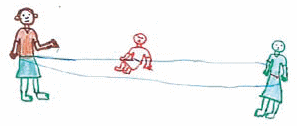
It is well documented that HIV/AIDS can have a significant effect on household financial resources, as money is diverted to health care and funerals, and income is lost when breadwinners are too ill to work. In the context of HIV and AIDS, therefore, it is especially crucial that the government pay attention to providing adequate poverty relief.
Research undertaken in KwaZulu-Natal 5 suggests that CSGs are making a difference to children (including those affected by HIV and AIDS) by increasing, for example, their chances of regular school attendance. While there is much discussion in the media about abuse of grants, there is no evidence that this is a widespread practice.
Government grants and other poverty alleviation programmes are not as accessible as they should be
Children and families frequently experience difficulties in accessing the government services and support for which they are eligible 4, 10.
The use of foster care grants (FCGs) to provide orphans with poverty relief threatens the functioning of the child protection system
The foster care system is a cornerstone of the child protection system, which is designed to assist children who have been abused and neglected.
However with encouragement from the South African government, increasing numbers of families that care for orphans are relying on foster care placement and FCGs as a means to access financial support. This approach on the part of the government is questionable for a number of reasons, including 20:
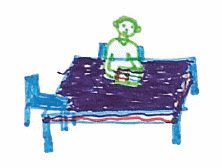
- The number of foster care applications in many parts of South Africa already far exceeds social workers' and courts' capacity to process them. As a result, vast numbers of orphans are already unable to access FCGs;
- Continued use of the administratively complex foster care system to provide basic financial support to orphans will bring the child protection system to its knees, and render it even less able to provide protection to children who really need it;
- Children's poverty-related vulnerability is neither synonymous with nor exclusive to orphanhood. A social security system that provides grants to orphans younger than 18, without providing adequate and equal support to the many other impoverished children whose parents are alive, is discriminatory. It fails to make provision for the multitude of other children made vulnerable by growing up in the time of the AIDS epidemic.
Prevention of sexual transmission of HIV to children and teenagers is complex and has shown little improvement
The prevention of sexual transmission of HIV is especially challenging because it requires complex changes in behaviour and social norms. Media campaigns in partnership with the Department of Health, such as Khomanani, loveLife, and Soul City, specifically target the youth with prevention messages around safe sex, and try to encourage confidence, particularly amongst young women, around negotiating sexual practices.
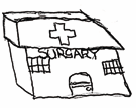
Many public clinics are not child- or youth-friendly
Research has repeatedly documented children's and adolescents' negative experiences when attempting to access reproductive health-related services and support.
Orphanages continue to mushroom, despite expert advice that they should only be a small aspect of an appropriate response to the epidemic
Their limitations include very high running costs, the fact that children are separated from their families and communities, and well- documented difficulties that older children experience when they leave the institutions.
Targeting orphans with support programmes that are not accessible to other poor children is a widespread response
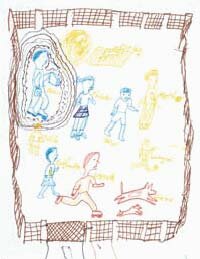
There is evidence that this strategy can have negative consequences for orphans, and that it does not adequately respond to the much larger numbers of needy children who live in the same communities. Orphan recipients of aid can become exploited, while those who do not fit the definition "orphan" remain at huge risk 10, 21.
Many government and civil society programmes to support children affected by HIV/AIDS rely on volunteers
Community-based care (in the form of home-based care services, community child-care forums, and others) plays a vital role in supporting children and families affected by HIV/AIDS. There is scope for further strengthening of community-based support through better use of existing institutions, such as schools.
However, the heavy reliance of many of these programmes on volunteer labour— usually of poor women— raises questions of appropriateness, equity, and sustainability 10.
Key policies and laws to address the needs of children affected by HIV and AIDS remain incomplete and unimplemented
The Department of Social Development's orphans and vulnerable children (OVC) policy framework and the Children's Bill are two key pieces of policy and legislation that have not yet been implemented:
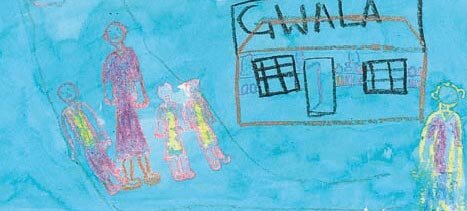
- The OVC policy framework is important for South Africa's fulfilment of the commitments that arose during the UN Special Session on HIV/AIDS held in 2001;
- The first part of the Children's Bill (the Section 75 Bill) was passed by the National Assembly in June 2005. Once the Section 75 Bill has been passed by parliament and signed by the president, the second Bill, the Section 76 Bill, will be tabled in parliament.
Once the second Bill has been passed, the two Bills will be merged into a single Children's Act. The Children's Act will replace the Child Care Act of 1983.
